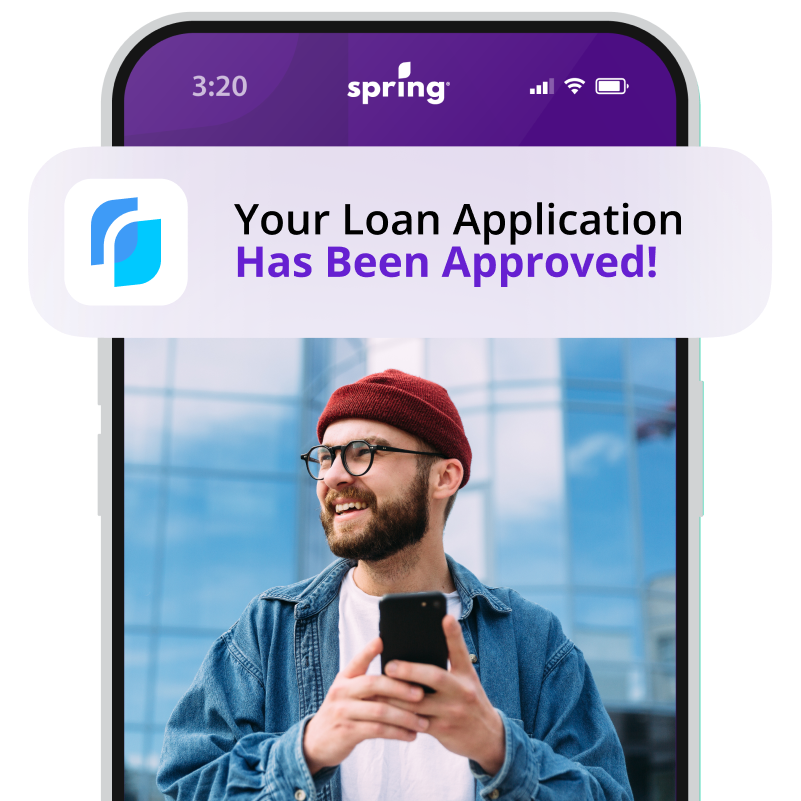Ways to Borrow Your Down Payment
When it comes to borrowing money for your down payment, you actually do have a few different options. Some of these options are better than others though. It is important to keep in mind that even though you don’t have to come up with the down payment up front, you now have to pay interest on the money you are borrowing. This means that you should pay close attention to what those costs will be, it will also affect your total approval amount for your mortgage.
Personal Loan
The first option with the lowest interest rate is a personal loan. Personal loans are often very flexible, and you can make the payments on the same schedule as your mortgage. They are more structured and usually can be paid off in 3-5 years. A lot of personal loans are also open loans, meaning that you can put extra money on them whenever you have it and can pay them off early.
Line of Credit
Another way you could borrow money for your down payment funds is with a line of credit. A line of credit works a little differently than a personal loan. They are a form of revolving credit, meaning only the interest is required to be paid, and you can pay off and use up to the credit limit as much as you please. That being said, lines of credit tend to have a slightly higher interest rate than personal loans. They also normally have variable interest rates. This means that The interest rate changes with the prime rate. Another thing to consider about lines of credit is that they don’t require a principal payment, so you can end up leaving them and paying more interest over time.
Credit Card
Using a credit card for a down payment has the highest interest rate of all of the options. Not only that but if you don’t pay back the cash advance within 30 days, then you have to start paying an extremely high interest rate. Cash advance rates are usually higher than the standard 20% used for regular transactions.
Money From Family
A way to avoid interest when borrowing enough money for a down payment is to borrow money from a family. In some cases, family members will just give the money. Either way, the lender may ask for some sort of letter proving the borrowed funds’ down payment sources so it doesn’t seem like the funds appeared out of thin air. Even when it comes to having your own down payments, lenders require proof that the money has been sitting in your account for at least 3 months. They even like to see the transactions where you put the money into personal savings.
RRSP Contributions
While this isn’t necessarily a no-down payment solution, using your RRSP funds to purchase your first home is a great way to avoid the interest rates from borrowing a down payment. This is called the Home Buyers’ Plan and is only available to first-time homebuyers. This plan lets you borrow up to $35,000 from your own savings in your RRSP account for your first home purchase. There is no penalty when taking money from this account, and you have up to 15 years to pay back the funds. Repayment won’t start until the second year after you withdraw funds.
In order to qualify for the Home Buyers’ Program, you must:
- Be a first-time home buyer
- Be a Canadian Resident
- Make the home your principal residence within a year of the purchase
- Sign an agreement on a qualifying home purchase (your house deposit does not have to be made yet, though)
If you have met all of these requirements then you are able to take the money out of your RRSP penalty free. It is actually a relatively simple process and you are using your own money to fund the down payment for your own home. When you pay back the funds when your repayment period starts, you are given a minimum amount that is required each year and it is all done when you file your yearly tax return.
Down Payment Assistance Programs
Depending on where you live in Canada, there are quite a few provinces that will provide some sort of down payment assistance for real estate to expand your down payment options. There is also a federal program called The First Time Home Buyer Incentive. This program allows Canadians to purchase a home by offering certain Canadians 5-10% of the purchase price, giving the home buyer a larger down payment. This amount does have to be repaid, but it is much less than interest on a loan.
This incentive is for first-time home buyers only and is considered a shared equity amount. How much you give back in equity will depend on when you make the repayment since it affects the portion of the purchase that’s considered shared equity. Currently, if the home appreciates, the government’s portion is up to 8% per year. With depreciation, it will go down to 8% per year.
In order to qualify, you must earn less than $120,000 per year ($150,000 in more populated areas like Toronto or Vancouver). You must also qualify for mortgage default insurance from the CMHC (Canada Mortgage and Housing Corporation). The CMHC is Canada’s equivalent to the Federal Housing Administration in the US. Keep in mind that insurance premiums will be included in the mortgage.





